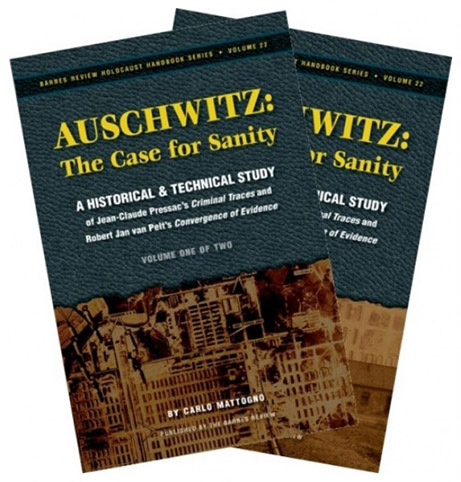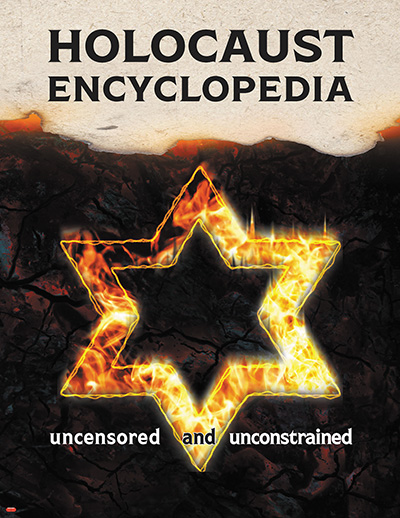Description
By Carlo Mattogno. In 1993 Jewish theologian Deborah Lipstadt called British historian David Irving a “Holocaust denier.” Irving sued her for libel in return. Subsequently a court case unfolded in England which attracted the attention of the world’s mass media in 2000.
The sharpest weapon in Lipstadt’s defense arsenal was Jewish art historian Robert van Pelt, who presented an expert report claiming to refute revisionist assertions about Auschwitz. Because Irving had neither the support by any expert witnesses nor was he himself an expert on the Holocaust, he inevitably lost the case.
Robert van Pelt was therefore praised as the defeater of revisionism. When he published his revised expert report in his book The Case for Auschwitz in 2002, he even advanced to the foremost expert on Auschwitz in the public’s eyes.
Mattogno’s Auschwitz: the Case for Sanity is the revisionist response to Robert van Pelt. His first revelation is that van Pelt has committed plagiarism: he plundered and basically regurgitated the research results published in 1989 and 1993 by French researcher Jean-Claude Pressac—yet without naming his source even once.
In more than 700 pages, Mattogno thoroughly scrutinizes van Pelt’s contorted assertions by juxtaposing them to material and documentary facts.
Mattogno’s analysis is devastating for van Pelt, as it reveals that van Pelt’s study of Auschwitz ignores crucial counter-arguments, fails to approach pivotal technical issues with technical means, is highly inconsistent, uses deceptive methods, presents conflicting sources without due source criticism, deforms all sources to serve the author’s perspective, and reveals a shockingly threadbare knowledge of the history of Auschwitz.
Mattogno therefore concludes:
“The Case for Auschwitz is neither a scholarly nor a historical work; it is only a biased journalistic assemblage of poorly understood and poorly interpreted historical sources.”
This is a book of prime political and scholarly importance, as it delivers the exterminationists’ case the most devastating blow ever!
Click here to look at this book’s Table of Contents and its first chapter.
Auschwitz—The Case for Sanity: A Study of Pressac’s “Criminal Traces” and van Pelt’s “Convergence of Evidence”
Holocaust Handbooks, Volume 22, 2 Vols., ca. 756 pp. total (Vol. I: 366 pp.; Vol. II: 390 pp.) pb., 6”×9”, b/w ill., glossary, bibl., index. Sold as a set only

